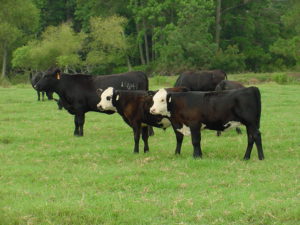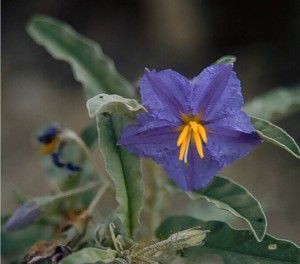Dealing with Drought
During a drought, little can be done to increase forage pasture growth. Proper management can minimize impacts of drought on your operation when it does, and it will, occur. Careful management early in a drought can minimize long term stand damage and help maintain forage yields when rains do come. If pastures are managed properly during times of low moisture, the effects of drought will be less severe and pastures will rebound faster when precipitation is sufficient. Remember, management practices that minimize damage to pastures during drought are also the same for maintaining healthy pastures in a normal year.
Managing livestock: Reduce stocking rate if you believe forage supply will be limited. First, cull cows that are open, in poor condition, or have poor disposition. A veterinarian can palpate cows for pregnancy and check for health problems that warrant elimination from the herd. Cows that are not pregnant are difficult to justify feeding expensive hay. Moving cattle to leased grazing lands where forage is available is an option to move cattle from stressed pastures without selling off a portion of the herd. Another option is early weaning and sale of calves. This reduces the stocking pressure and reduces the nutrient requirement of the cows (reducing forage intake by 20%) because the heavy nutrient demand at lactation is stopped. The longer decisions to decrease livestock numbers are delayed the sooner the forage supply will be exhausted. Delaying the decision to reduce stocking during a drought accelerates financial losses of the livestock production enterprise.
Grazing management: Lack of moisture suppresses plant growth and retards root development. Allow 6-8 inches of new growth before allowing livestock to graze. A healthy pasture will have 3 to 6 inches of stubble. In severe drought, pastures may not reach this stubble height, so these pastures should be deferred until the time of dormancy (when nights are 55 degrees F for warm-season grass pastures) and then grazed to 3 -4 inch stubble height. Those pastures with little or no green growth are living off the roots and root mass has declined substantially. Roots must be replaced or bare areas will increase and invader grasses/weeds will prevail. In addition, overgrazing of plants removes the buds needed for re-growth. If insufficient stubble remains, water capture and infiltration is reduced. So, when it does rain again less water will enter the soil stores for plant growth. Stocking rates must be reduced on all types of forage. Fertilizer inputs should be reduced or stopped ruing periods of reduced precipitation, and rotational stocking should be considered to increase harvest efficiency, forage utilization, and flexibility of her management.
Weed management: Do not apply herbicides during a drought. Plant mechanisms in response to a drought will prevent adequate entry of herbicides into plants and result in a high cost application with little control of the specific weed.
Vanessa Corriher-Olson
Professor, Forage Extension Specialist
Soil & Crop Sciences
Texas A&M AgriLife Extension, Overton,TX
903-834-6191

